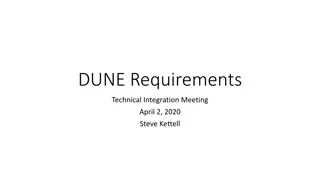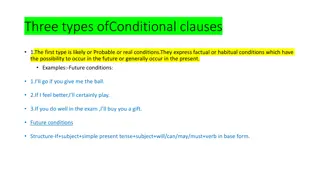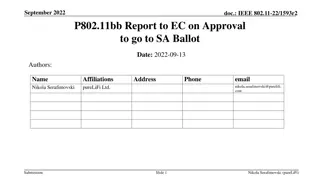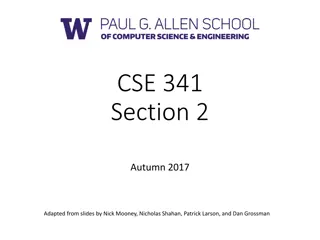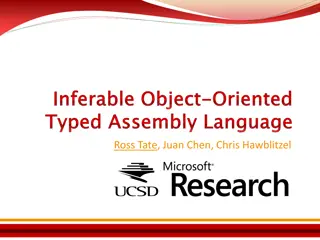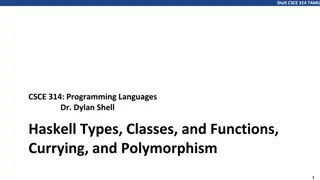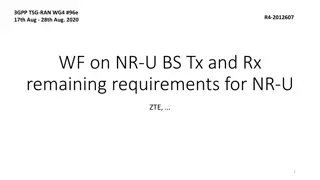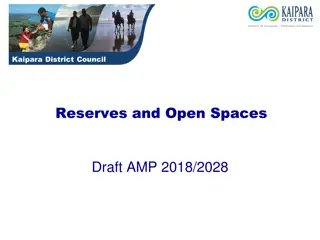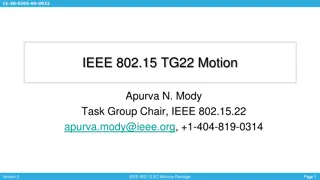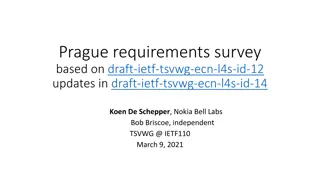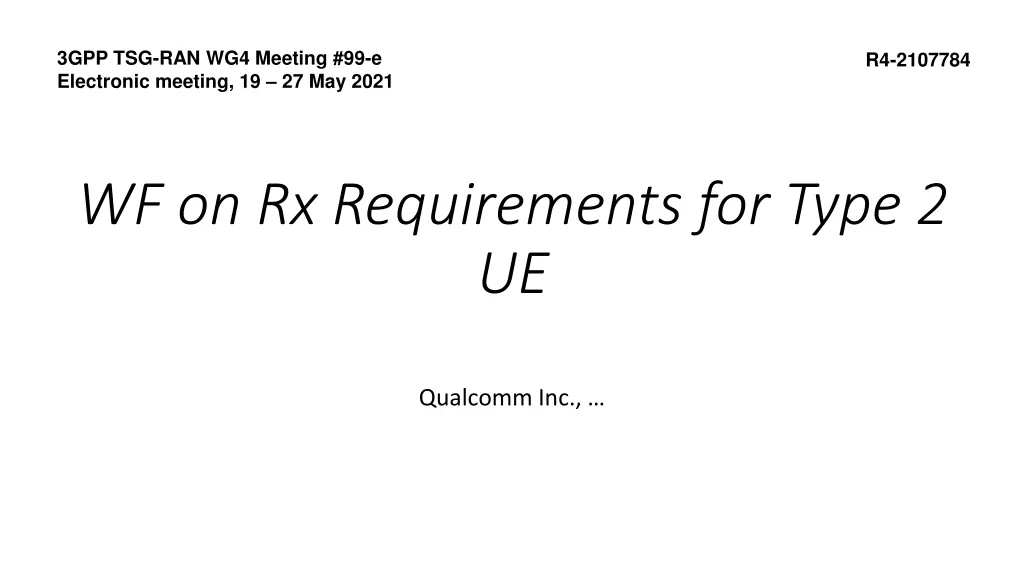
Intra-Band EN-DC RF Performance Requirements and Proposals
Explore the discussions and proposals surrounding intra-band EN-DC RF performance requirements, specifically focusing on issues related to RX requirements for Type 2 UE Qualcomm Inc. Understand the challenges and potential solutions put forward by various stakeholders in the industry.
Download Presentation

Please find below an Image/Link to download the presentation.
The content on the website is provided AS IS for your information and personal use only. It may not be sold, licensed, or shared on other websites without obtaining consent from the author. If you encounter any issues during the download, it is possible that the publisher has removed the file from their server.
You are allowed to download the files provided on this website for personal or commercial use, subject to the condition that they are used lawfully. All files are the property of their respective owners.
The content on the website is provided AS IS for your information and personal use only. It may not be sold, licensed, or shared on other websites without obtaining consent from the author.
E N D
Presentation Transcript
3GPP TSG-RAN WG4 Meeting #99-e Electronic meeting, 19 27 May 2021 R4-2107784 WF on Rx Requirements for Type 2 UE Qualcomm Inc.,
Background: Problem to solve as stated in [3] [4] Scenario for which the current intra-band EN-DC requirements do not ensure RF performance RAN4 to consider requirements to ensure performance with larger received PSD differences (than 6 dB for Type 1) between intra-band (or inter-band with shared DL spectrum) cell groups. Proposal in [2]: a provision that the minimum requirements apply for an input power of the anchor signal up to [30 dB] greater than the input power of the wanted NR except for the minimum requirement on the maximum input power (consistent with ACS requirements) Issue with [2]: UE filters have no selectivity for other DL carriers that are largely imbalanced UE cannot meet RX requirements due to lack of selectivity of DL carrier from another CELL group. Proposal in [1] in response to [2] for equal DL carrier BWs: REFSENS relaxation is a function of DL carrier imbalance with inadequate filter selectivity. REFSENS must be relaxed by [0.5-1]dB for 19dB DL carrier power imbalance REFSENS must be relaxed by [14]dB for 30dB DL carrier power imbalance
WF: Choices so far for DL carrier power imbalance Agree on REFSENS requirement for 19dB DL carrier power imbalance at the worst-case frequency offset. Option 1: [0]dB Option 2: [0.5-1]dB Option 3: Other values are not precluded. Further study for impact on RX requirements for a larger range [19-30]dB DL carrier power imbalance Further refine the DL carrier power imbalance test point. Study impact on REFSENS Up to 14dB relaxation for 30dB DL carrier power imbalance from [1] at the worst-case frequency offset Study relaxation for 25dB DL carrier power imbalance from [4] Study relaxation Vs frequency offset of other CG for larger DL carrier power imbalance. [FFS] impact on other RX requirements.
References: [1] R4-2111461 Imbalance Requirement for Type 2 UE RX, Qualcomm Incorporated, R4#99-e [2] R4-2109964 Requirements Type 2 UEs supporting inter-band MRDC with overlapping DL, Ericsson., R4#99- e [3] R4-2103166 WF on requirements for Type 2 UEs supporting inter-band MRDC with overlapping DL, Ericsson, R4#98bis-e [4] R4-2000953 Further discussion on power imbalance requirement for intra-band EN-DC/NR CA , NTT DOCOMO, INC., R4#94-e







